Celebrating Kafka: Goethe-Institut brings Kafka’s surreal world to life
Celebrating Kafka: Goethe-Institut brings Kafka’s surreal world to life
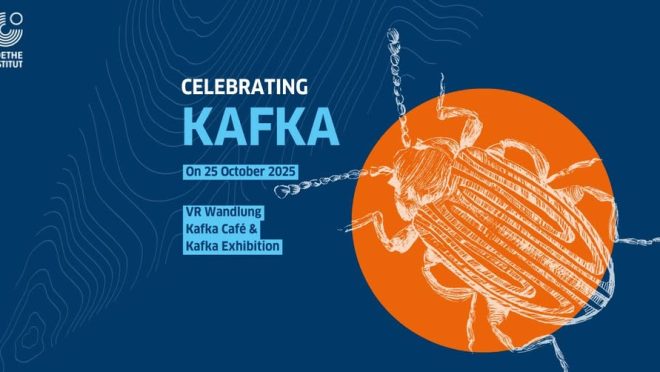
“As Gregor Samsa awoke one morning from uneasy dreams, he found himself transformed in his bed into a gigantic insect.” – The Metamorphosis, Franz Kafka.
Few opening lines in literature are as haunting or as oddly beautiful as this. For over a century, Franz Kafka’s The Metamorphosis has unsettled readers with its underlying horror and melancholy. The story of Gregor Samsa, a salesman who wakes up one morning to find himself turned into an insect, continues to equally bewilder and haunt us.
But this October, Kafka readers found themselves closer to Gregor than ever before.
At Goethe-Institut Bangladesh, visitors were invited to experience the world of Kafka. Through an immersive virtual reality experience titled VR Wandlung, audiences step directly into Gregor’s claustrophobic room and feel the walls closing in, the floor creaking, the sound of rain blurring the edges of time.
And suddenly, you are not watching Gregor. You ARE Gregor.
The room feels smaller than it should. The heavy, wooden door looms large. You hear pounding from the other side, “Gregor! Gregor! Open the door!”, followed by a girl’s muffled sobs. You try to speak, but your voice doesn’t come. You look down, and your hands — or what once were your hands — twitch in strange rhythm and two antennae wiggle over your head. The horror is not in what you see, but in what you feel: the loss of language, of connection, of being human.
As I put on the VR headset, seeing my reflection as a bug in the mirror deeply disgusted me. I wondered if the hatred stemmed from self-doubt or some unexplained anger or helplessness.
The banging on the door gets louder, and Gregor’s heart starts beating like a drum and suddenly the wooden door is yanked open. The colour white floods the scene. Everything fades away.
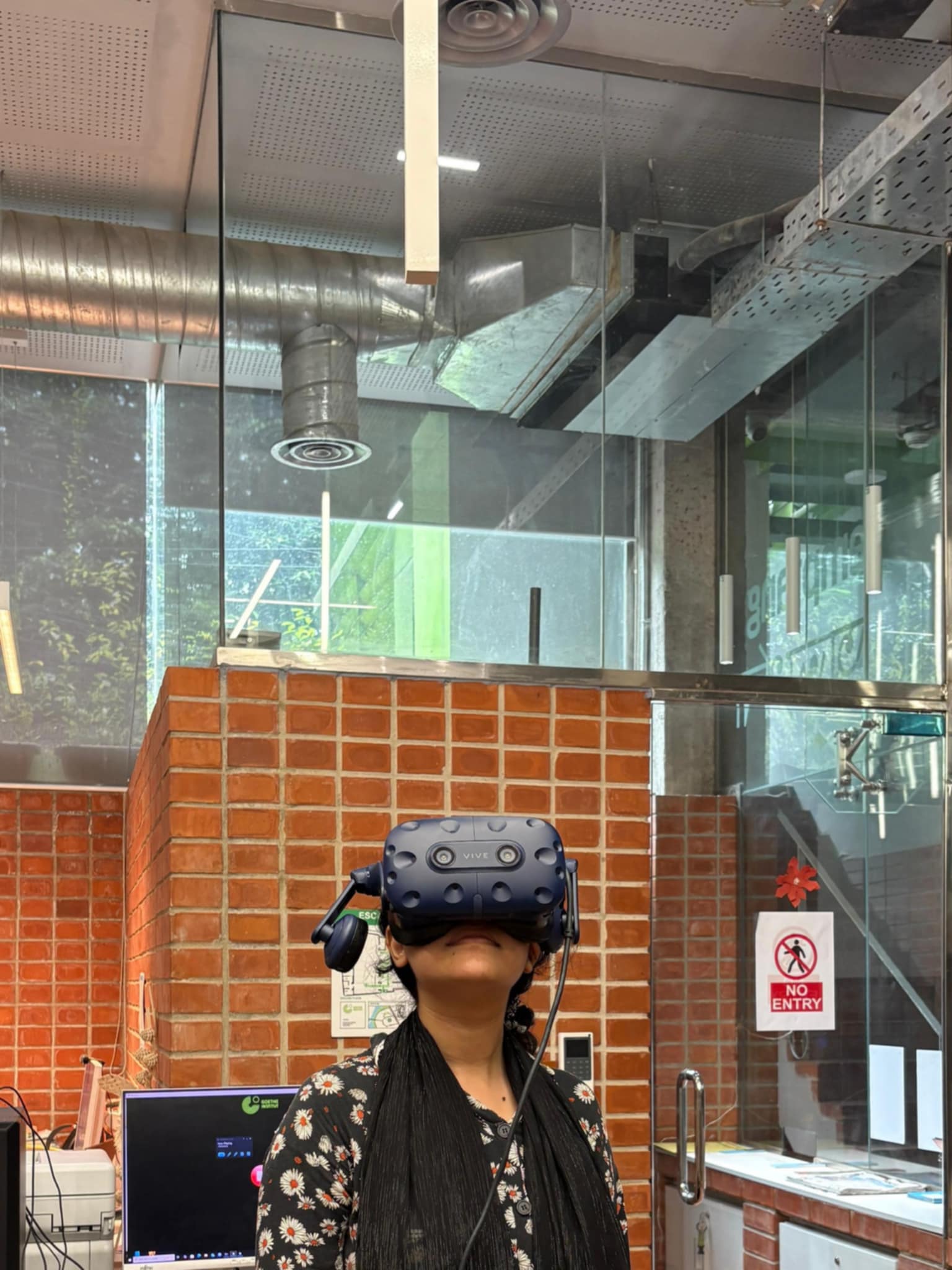
When the headset lifts after three long minutes, I feel sorrow for Gregor once again. For a brief, bewildering moment, you become unsure which world you’ve returned to.
“It’s really good,” says Afia Hasan, a visitor experiencing the VR Wandlung. “The attention to detail is brilliant — I felt as if I’d been transported straight into the story.”
This is precisely what the Goethe-Institut aims for through Celebrating Kafka, a month-long exhibition starting from 25 October, dedicated to the Czech writer’s life and legacy. A century after Kafka’s death in 1924, the programme reintroduces him to new audiences through modern technology and visual storytelling.
“Kafka never wrote for the masses,” one organiser told The Business Standard. “Yet somehow, he belongs to everyone who has ever felt alienated, trapped, or misunderstood. That’s what makes him timeless.”
Kafka-Café: A space for conversation, contemplation, and connection
The celebration unfolds in three dimensions — visual, virtual, and conversational.
At the auditorium, Kafka-Café took place on 25 October, where fellow Kafka enthusiasts discussed how Kafka’s imagination continues to shape our understanding of modern life.
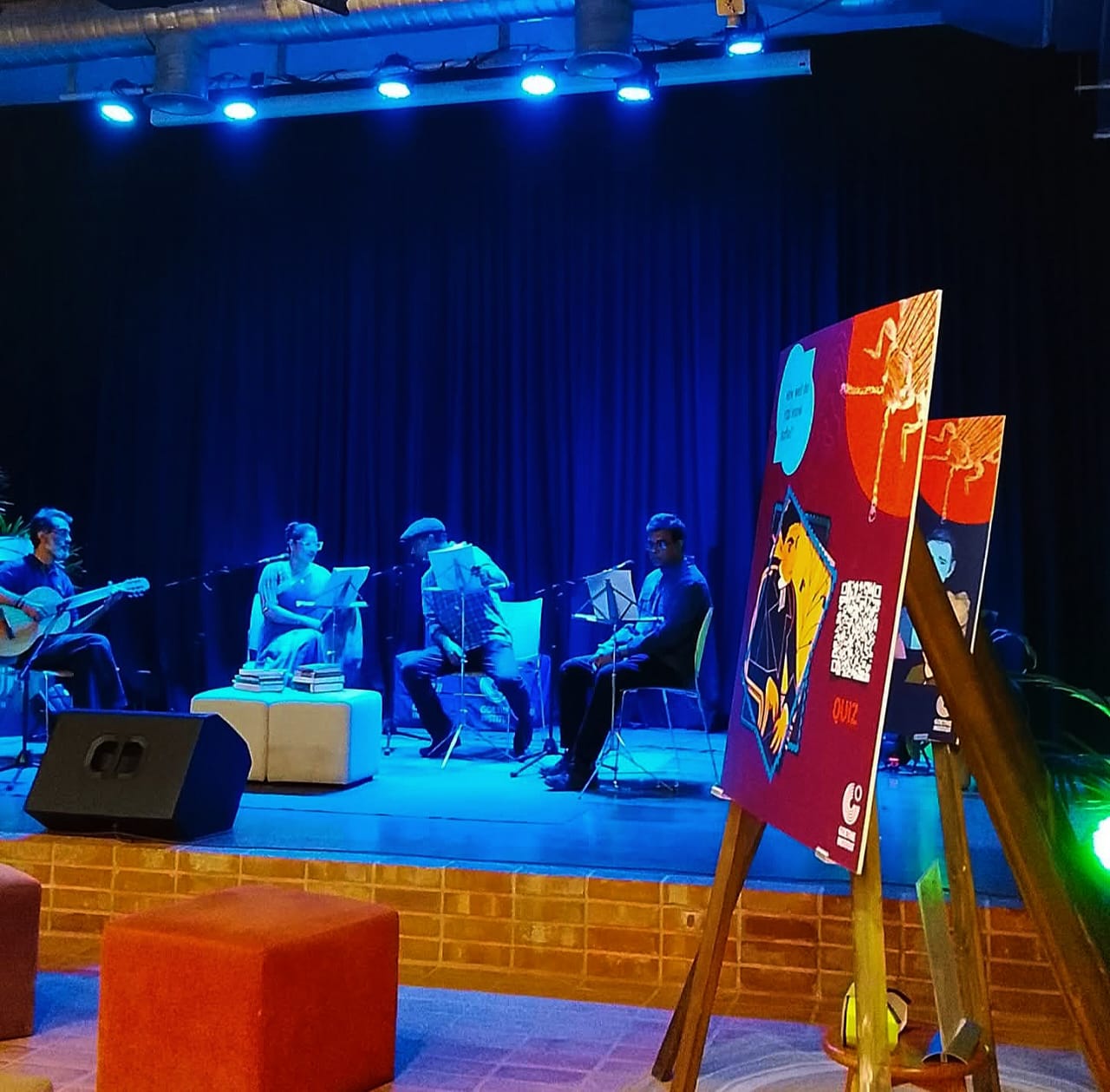
At one table, a young literature student compared Gregor Samsa’s transformation to the alienation of modern office life. “He’s basically a metaphor for burnout,” she laughed softly. “Kafka wrote it a hundred years ago, but it feels like we are living it now.”
The comics exhibition
On the first floor, Austrian artist Nicolas Mahler’s comic exhibition The Complete Kafka offers a more fun yet equally profound take on Kafka’s life. Mahler’s minimalist black-and-white sketches strip down the complexity of Kafka’s prose into visual wit. His drawings—spare lines, exaggerated gestures, ironic captions—somehow capture the essence of Kafka’s humour and melancholy all at once.
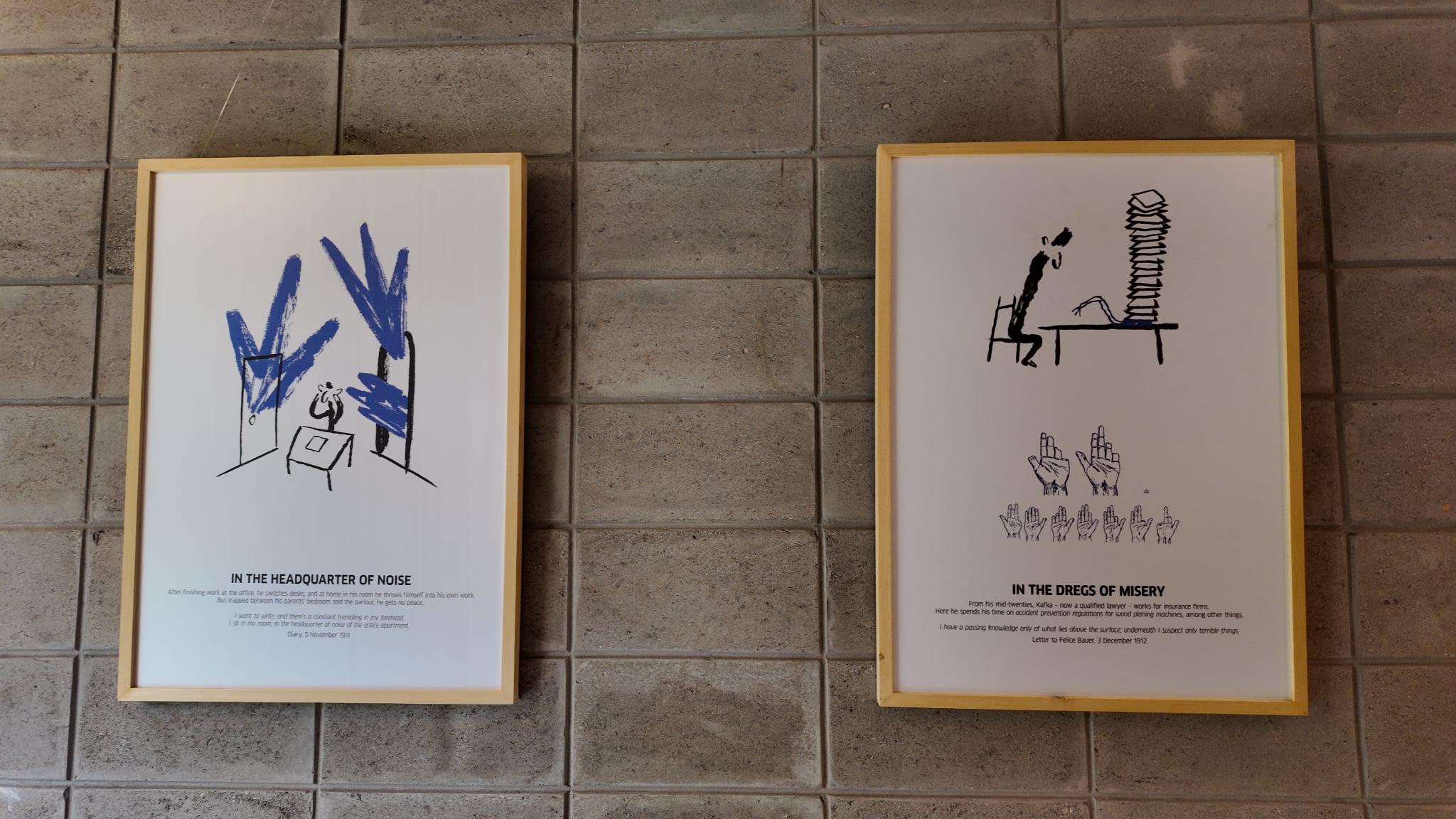
In one panel, titled “Fear”, a frail Kafka stands before a mirror, his eyes wide with existential dread. Yet the exhibition balances absurdity with admiration, reminding viewers that behind the world’s most anxious storyteller stood a man capable of laughter as well.
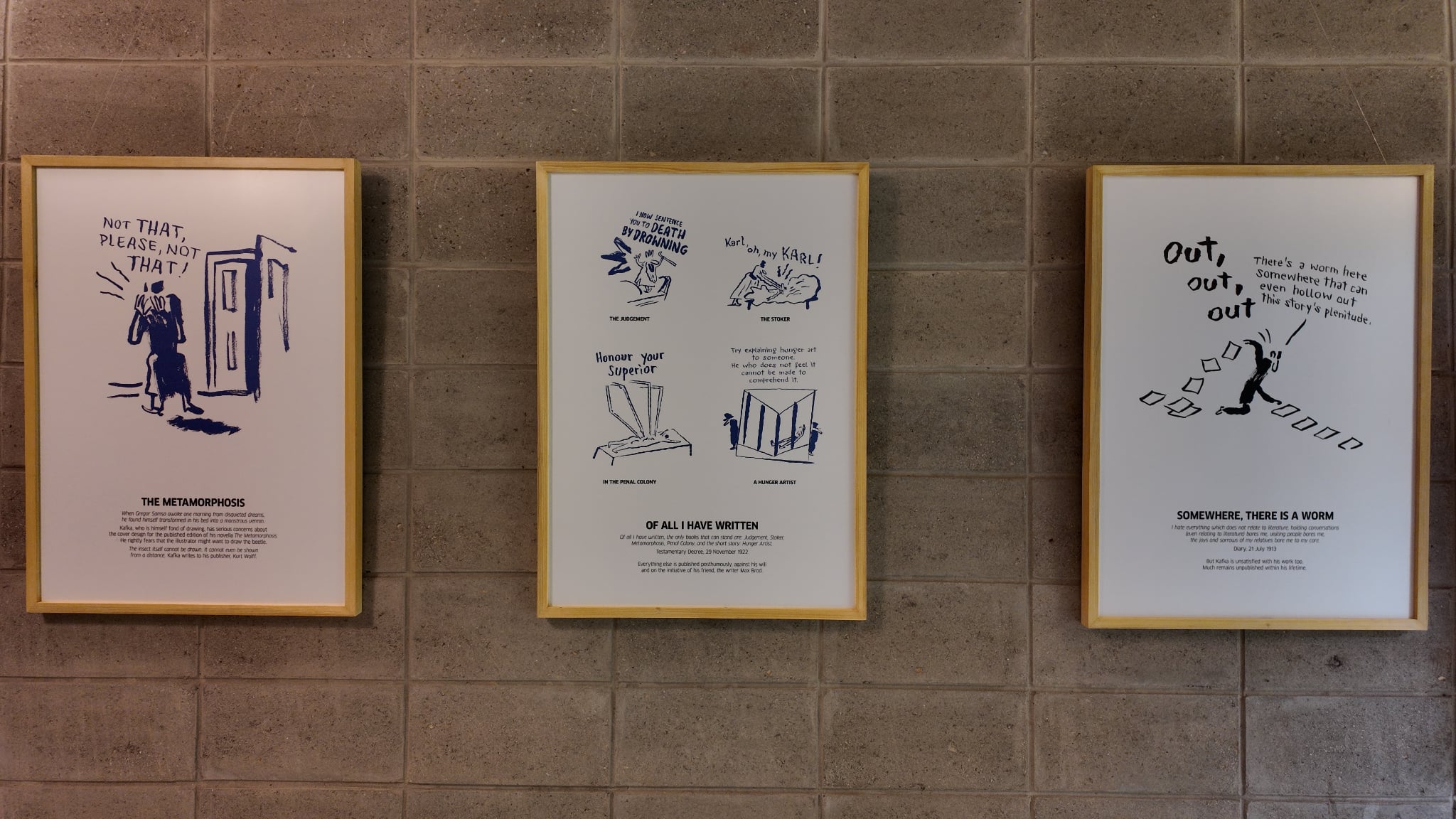
The exhibition, open until 25 November 2025, invites visitors to wander through Kafka’s universe.
Bonus: A night of soulful (and unexpected) music with Viktor Soos
While I had come primarily for Kafka, I learnt that a piano concert by the German pianist Viktor Soos would begin at 7pm—a totally unexpected addition to my plan. The idea felt too alluring to resist. So I stayed.
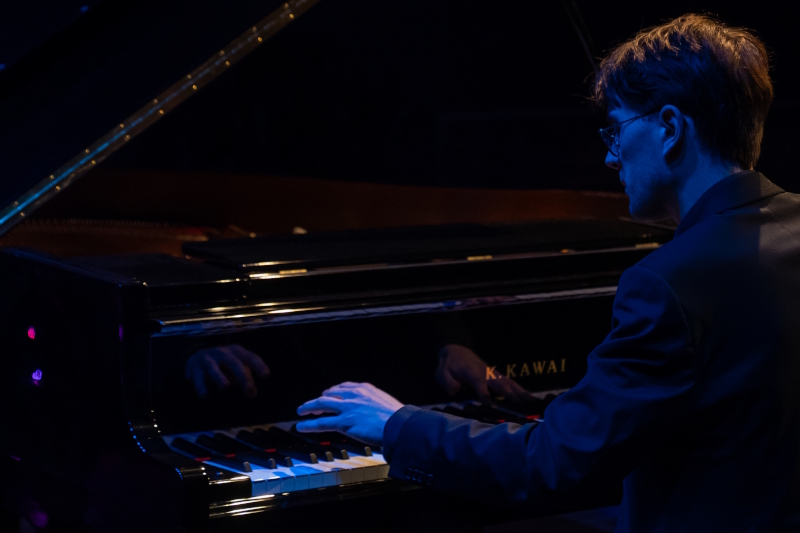
Photo courtesy: Goethe-Institut Bangladesh/ Ahadul Karim Khan
At exactly 7pm, a pinpoint silence settled over the auditorium as Viktor Soos took his place at the piano. He began to play. Slowly, the first notes unfurled through the room that felt delicate — until the music seemed to breathe on its own. It was mesmerising.
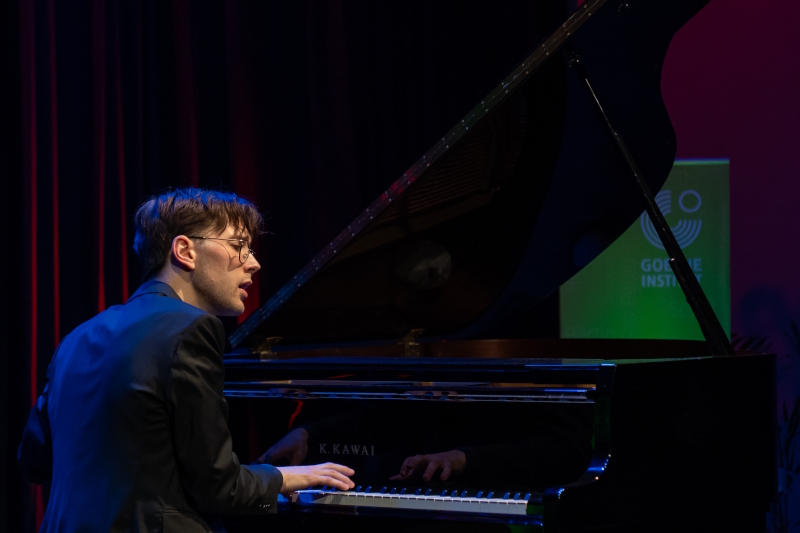
Viktor played with a kind of passion that felt energetic and so full of life. You could see the passion etched across his face, the way his fingers danced — swift, fluid, almost choreographed — over the keys. He played three works of Clara and Robert Schumann without any break.
By the time the final chord faded at 8:15pm, I was already in awe, and I believe the rest of the audience shared the same feeling as mine. Viktor rose, turned toward the audience, and bowed softly. Viktor humbly received a long and loud applause from the audience — deep and full of admiration.
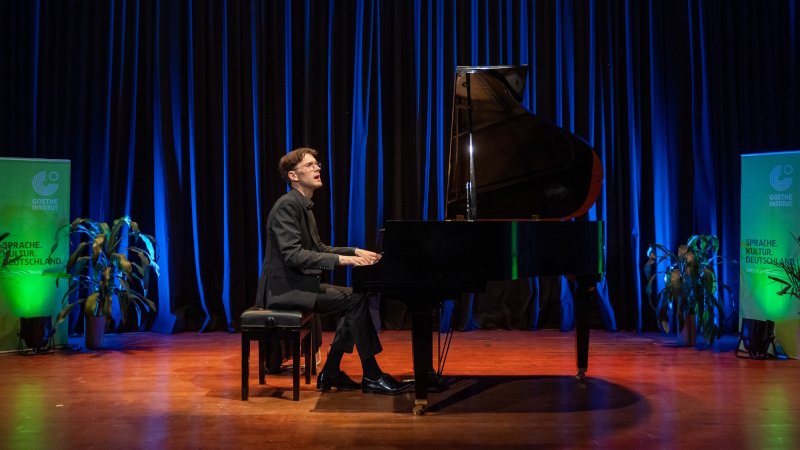
Kafka, alive in Dhaka
The brilliance of Celebrating Kafka lies in its balance between technology and thought. The VR Wandlung may last only about three minutes, but it compresses within it the full weight of Kafka’s imagination — a world that makes you question not just Gregor Samsa’s transformation, but probably your own as well.
What does it mean to be trapped in a life you did not choose? To lose your voice in a world that demands constant answers? To wake up one morning and no longer recognise yourself?
Kafka never offered answers. He offered mirrors.
I paused for a moment and pondered over Gregor’s locked door, his desperate attempts to reach his family, and his silent surrender. And I thought about the people leaving the exhibition; probably they are now carrying a small piece of the same reflection within as well.
The VR Wandlung segment concluded on 29 October, but the exhibition continues until next month, ensuring that Kafka’s unsettling yet illuminating world remains open to those willing to step inside.
A hundred years on, his writing still speaks to the loud confusion of being human. But even in our most absurd moments, there is beauty in trying to understand the chaos that shatters and rips us apart.


